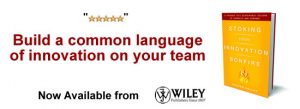Achieving Long Term Transformational Success with PLM in Life Sciences, Part 1 [Kalypso]
In the life sciences industry, the opportunity to use Product Lifecycle Management (PLM) for complete “game-changing†transformation is very real. The many processes that comprise research, engineering, quality, regulatory, supply chain readiness and operations can be automated and integrated together to provide one streamlined flow. This is used to convert knowledge and innovative ideas into high-value products.
In the 16 years of working in this industry across dozens of organizations, from small companies with a single product, to the largest medical device companies in the world, I‘ve seen a lack of automated and integrated process capabilities in every single organization I have visited. It’s not uncommon to see countless separate databases involved in the product lifecycle. Not to mention the many processes managed in e-mail and Excel.
At one client, my colleague, Graciella Beyers, and I, identified dozens of unique processes that were executed each time a new product was developed and released to the market. Some of these processes were repeatedly executed. Based on our analysis, we identified well over a thousand points where data had the potential to be duplicated or worked on by numerous people without clear communication from one process to the next.
We found that many of these processes were supported by stand-alone tools, and very few were integrated using automated approaches. Data integration was either a manual task or was never actually transferred as it should have been resulting in inconsistent data. Although this particular client was actually more mature in terms of automated processes, they still faced inefficiencies in managing their processes. While many life sciences companies have implemented PLM, they commonly use it to automate only between one and five business processes, leaving most still manual, with only paper-based traceability and history. Automating and integrating these other areas can streamline the entire new product introduction process while providing significant improvements in product and regulatory cost and reduction in risk.
This specific business issue is a continued missed opportunity to accelerate the pace of innovation. While some pioneer organizations understand the transformational opportunity of PLM, most are still struggling to achieve it.
Having seen first-hand the power that medical technology has to transform lives (I’ll touch on some personal experiences later), I believe in transforming medical companies to achieve their highest potential by optimizing their innovation and delivery capabilities.
In this blog series, I will provide some insights to why PLM has true potential to be so transformational and consider some of the obstacles that companies in the life sciences industry encounter.
Dave brings over 17 years of experience in product lifecycle management (PLM) to Kalypso’s clients, with deep expertise in the medical device industry.
Originally Published on Viewpoints.kalypso.com
dave.hadfield@kalypso.com
https://viewpoints.kalypso.com/author/dave-hadfield/
NEVER MISS ANOTHER NEWSLETTER!
LATEST BLOGS
The Evil Downside of Gift Cards
This past holiday season I saw probably one too many articles trumpeting the value of gift cards to retailers and how they are a great thing for retailers. My skeptic side starts coming out as I see article after article appear, and I have to start asking “Is the increasing prevalence of gift cards as a holiday gift (primarily Christmas) a good thing for retailers?”
Read MoreWhy the iPhone will not succeed – Yet
The new Apple iPhone is set to launch on June 29, 2007 and the press and investors are making it a darling. Investors have run Apple’s stock price up from about $85 per share before its announcement to $125 per share recently, but the iPhone still will not succeed – at least not yet.
Read More


